Results 1,741 to 1,750 of 10840
LinkBacks (?)
-
12-26-2016, 11:32 AM
-
09-02-2016, 05:39 PM
-
whole garden made with pallets!! Love it!! | Pallets | Pinterest | Pallets, Pallets Garden and Wooden Pallets
Refback This thread03-06-2016, 11:30 AM -
10-20-2015, 05:29 PM
-
06-12-2015, 08:00 PM
-
02-26-2015, 01:58 PM
-
01-05-2015, 04:13 PM
-
12-19-2014, 10:19 AM
-
EMERGENCY: HUGE FEMA PANDEMIC EXERCISE IN USA IN NOVEMBER, INTERNET SHUT DOWN PART OF EXERCISE | Prepare4Survival
Refback This thread12-03-2014, 10:39 PM -
Off Grid World ? Ugly Duckling Shipping Container Home Built by Artist Is a Beautiful Swan on the Inside
Refback This thread11-25-2014, 03:10 PM -
11-17-2014, 10:59 PM
-
11-13-2014, 11:18 AM
-
11-09-2014, 02:54 PM
-
10-28-2014, 11:38 PM
-
10-26-2014, 05:54 AM
-
10-16-2014, 11:28 AM
-
10-03-2014, 01:25 PM
-
10-02-2014, 09:16 PM
-
09-26-2014, 07:00 PM
-
09-26-2014, 01:56 PM
-
09-19-2014, 04:46 PM
-
09-13-2014, 05:49 AM
-
09-05-2014, 01:52 PM
-
09-01-2014, 09:39 AM
-
08-30-2014, 06:29 PM
-
08-10-2014, 06:29 AM
-
08-04-2014, 05:07 PM
-
07-23-2014, 11:14 AM
-
New Evidence on Expiration Dates | Medical Preparedness | Doom and Bloom (TM) | Doom and Bloom (TM)
Refback This thread07-22-2014, 10:10 AM -
07-18-2014, 08:37 PM
-
07-15-2014, 04:57 PM
-
07-11-2014, 01:40 AM
-
04-22-2014, 11:14 AM
-
04-18-2014, 12:57 PM
-
04-18-2014, 10:10 AM
-
04-14-2014, 12:18 AM
-
04-12-2014, 02:28 AM
-
03-02-2014, 11:43 PM
-
12-24-2013, 11:59 PM
-
12-07-2013, 11:04 PM
-
kitchen | Cob
Refback This thread11-25-2013, 03:24 PM -
10-22-2013, 10:25 PM
-
Apple Pie Braid | Sweets
Refback This thread09-26-2013, 07:58 AM -
09-02-2013, 04:44 PM
-
5 Reasons Why You May have to Bug Out Even Though You Don’t Want to | The Apartment Prepper's Blog
Refback This thread08-23-2013, 03:20 PM -
06-27-2013, 06:30 AM
-
06-23-2013, 08:11 PM
-
06-17-2013, 11:21 PM
-
05-24-2013, 05:06 PM
-
To Eat / BASIC LIST / SUGGESTED ITEMS FOR LONG TERM SURVIVAL - Page 275 - ALIPAC
Refback This thread05-01-2013, 03:49 AM
Thread Information
Users Browsing this Thread
There are currently 1 users browsing this thread. (0 members and 1 guests)
-
02-29-2012, 06:35 AM #1741Senior Member


- Join Date
- May 2007
- Location
- South West Florida (Behind friendly lines but still in Occupied Territory)
- Posts
- 117,088
Nutrient-Dense Food: Your Secret Arsenal for Food Storage Success
February 27, 2012 by Peggy Layton

In any survival scenario, the most valuable asset or currency you will need is food. Food reserves will be more precious than gold, oil and cash. We must have food to survive. Let’s face it, when you’re hungry, nothing else matters. If you don’t have nutrient-dense food, your food reserves will be insufficient.
Nutrient-dense food is your secret weapon. It is the single most important factor to catapult you from “someone who just has food storage” to someone who has a nutrient-dense food reserves.
It’s not enough to just have “food.” You should have food that has the highest nutritional density for the space that it will take up. This will ensure your family’s health will not be compromised in stressful times.
Pound For Pound And Dollar For Dollar
Money is getting tight for most people. We must be wise with each dollar we have.
The food-reserve decisions you make now will determine your wealth when food prices double and triple. Determining how much money you put into food reserves is like buying stocks. When it comes time to invest in your food reserve bank, there is one key investing tip that you must know.
One “dollar” doesn’t equal $1, and one can of “food” doesn’t equal one can of food.
A dollar spent today on dried fruits and vegetables is a stronger dollar than a dollar spent on a box of cereal. One jar of fruit whose juice you could also drink at another meal or add to pancake batter is not the same as one jar of food that is not as versatile and is limited in its recipe appeal.
I believe that pre-made meals that you just add water to and cook are a great investment. You don’t have to open six to 10 cans and find a recipe to make a meal. When you need food reserves, you need them now and you need them convenient and easy to prepare with the minimal amount of heat and fuel. Each food-reserve choice must give you optimal return on investment, pound for pound and dollar for dollar.
Quantity Doesn’t Equal Quality
You may have a large food reserve, but is it quality food? In times of stress, you need the highest quality food available. To optimize storage space, each inch must yield the highest quality of food to justify occupying the space where it is stored. When it comes time to pack your 72-hour emergency bug out bag, every square inch counts. Lightweight, nutrient-dense food could save your life.
A “cheap” bag of processed food will not give you the nutrition needed. You need high-quality food in any stressful situation. In a worst-case scenario, there could be viruses in the air, irritants in your throat, bacteria to combat and gastrointestinal tracts that are not properly digesting food. If we eat nutrient-dense food, we will better combat illnesses caused by a pandemic flu or some other disaster.
I would rather have oatmeal or nine-grain cereal of the highest quality with a few dried apple slices than boxes of processed, poor-quality, sugary cereal. Why? Because each bite you put into your mouth will cost you — not financially, but you will pay with your health.
Digestive Enzyme Optimization
If your food is not living (whole foods), your body will need to produce enzymes and digestive juices to break the food down and make it bioavailable. Dehydrated fruits and vegetables are the highest quality because the water has been removed, and the enzymes are still in the food. Any grain, bean or legume that will sprout is a nutrient-dense food.
It takes more energy and digestive enzymes to digest processed, packaged food than high-quality, dried whole foods.
Food That Ignores Constitutional Law
All food reserves are not created equal. One can of dried food has greater nutritional value than other cans of wet pack food from a grocery store. Homegrown food that you dehydrate at home in your food dryer is better-quality food, because you can regulate what goes into putting up the food and the temperature at which it is dehydrated. Get fruits and vegetables from your local grocery store, farmers market or your garden. Even winter vegetables such as potatoes, carrots and onions can be sliced thin, dried and stored, then reconstituted in soups.
Imported food from countries with less-stringent inspection for insecticides, fertilizers, bacterial and chemical contamination have entered our country’s food supply and have proven to be problematic. Storing safe, clean food is essential.
When storing dehydrated food, it is best to look for the healthiest dried foods available. You want to get the most for your money. Read the labels on the containers. You should purchase foods that do not contain genetically modified organisms (GMOs), Monosodium Glutamate (MSG), Hydrogenated Oils or Trans Fat. Organic food is usually more nutritious than other foods.
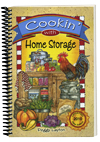 Use canned stored food such as dried fruits, vegetables, grains, legumes and beans in recipes from my food-storage cookbooks, which are available here.
Use canned stored food such as dried fruits, vegetables, grains, legumes and beans in recipes from my food-storage cookbooks, which are available here.
You can purchase high-quality freeze-dried or dehydrated foods that are in gallon-sized cans. These non-GMO foods do not contain MSG, trans fats, harmful chemicals or insecticides, and they have a 15-year shelf life. Click here to check out all the different foods available.
I’ve been testing a line of nutritious fast-and-easy gourmet meals called GoFoods. This company has a new concept in storable foods that are delicious, nutritious, affordable, clean and convenient for daily use. GoFoods are for on-the-go families because they can be eaten today, stored for the future or shared with family, friends or neighbors.
I am very impressed with the food. It is dehydrated, not freeze-dried, so the prices are very reasonable. Each package of food is ready to go with everything except the water. It takes only 15-20 minutes to cook, and the food is delicious. The packages feed two to four people.
The Mylar® packages include breakfast items such as pancake mix, oatmeal, granola and powdered milk. They also include soups for lunch like cheddar broccoli, Italian chicken, vegetable beef, tortilla soup, corn chowder, minestrone, chicken noodle, chili, and potato cheddar. Entrées for dinner and other baking items include chicken pasta Alfredo, cheesy chicken rice casserole, beef stroganoff, au gratin potatoes, instant seasoned potatoes, corn muffin mix, cornmeal dumplings, wheat bread mix, buttermilk biscuit mix and more.
Click here to check out this great food with a 15-year shelf life.
–Peggy Layton
Nutrient-Dense Food: Your Secret Arsenal for Food Storage Success : Personal Liberty Alerts=Join our efforts to Secure America's Borders and End Illegal Immigration by Joining ALIPAC's E-Mail Alerts network (CLICK HERE)
-
03-02-2012, 10:40 AM #1742Senior Member


- Join Date
- May 2007
- Location
- South West Florida (Behind friendly lines but still in Occupied Territory)
- Posts
- 117,088
No Matter How Much Food You’ve Got Stored, It Will Eventually Run Out in a Full-Blown Collapse
Joe Alton, M.D.,aka Dr. Bones
March 1st, 2012
Doom and Bloom Nation
Comments (254)
The following article has been generously contributed by Joe Alton, M.D., aka Dr. Bones, of Doom and Bloom Nation where you can find strategies to stay healthy that include traditional medicine, alternative remedies, and medicinal/survival gardening. For the best in emergency and long-term disaster medical preparedness we encourage you to check out The Doom and Bloom Survival Medicine Handbook and follow Dr. Bones and Nurse Amy on their weekly podcast.
To Survive, How Much Land?
Have you ever wondered how likely it is that you’ll be able to produce all the calories you’ll need on that piece of land you have? How much land for livestock? How about those solar panels you were thinking about? How many square feet of panels will provide you with the electricity you’ll need? There are ways to figure this out, and the answers may surprise you.
Let’s start by talking power. In a collapse situation, you’ll probably be able to rely on the sun and wind and not much else, unless you’ve built a watermill. The best answer might be installing some solar panels on your roof. This is a commonly available option that many people are considering nowadays. Let’s say part of your roof is facing south (the best place for a solar panel) and you get 7 hours or so of sunlight, on average. To get the amount of power that an average home uses in a year, you’ll need 375 square feet of panels. These things aren’t cheap, and that much hardware is going to be beyond the average family’s financial reach. This means that you’ll have to make decisions regarding how to ration the power you ARE able to produce. Look around the house, and you’ll probably see lots of things that are plugged in that you can eliminate if the stuff ever hits the fan. This is part of the planning you’ll need to do now, so that you’ll be better prepared for times of trouble.
How about food? If you have a family of four, you’ll want to provide at least 2000 or so calories per adult, more if you’re a big guy, maybe a little less for kids. The formula is simple: At least 30 calories per kilogram of body weight. One kilogram equals 2.2 pounds, so an 80 kilogram adult would weigh 176 pounds. 30 x 80 = 2400 calories/day. Less for kids, of course. All in all, you’ll need to provide 8000-9000 calories a day to maintain your family of four’s weight.
So, let’s talk about some hard realities. No matter how much food you’ve got stored, it will eventually run out in a full-blown collapse. For your future success, better get that garden growing.
Anyone who’s done it will tell you that there’s a learning curve, and you sure don’t want to plant that first seed in the midst of the Zombie Apocalypse.
Now, let’s separate your garden out into three categories: fruits, berries, and vegetables, then wheat, then corn. If you went totally vegetarian, you would need a little less than half an acre per person to provide all of those calories. That means a family of 4 needs almost 2 acres of farmable land!
The majority of this land will go to fruits, berries, and veggies. You’ll get the most nutrients in terms of vitamins and minerals from these. To decrease the amount of land you’ll need, consider companion planting. Some organic farmers will plant sunflowers, and then plant peas that will grow up the long stalks. The same goes with corn, squash, and pole beans. Squash will grow low to the ground, pole beans will take the intermediate area, and corn up high. Make sure you don’t put plants in the same family together, such as dill and carrots. They will share the same pests and diseases, which could possibly spread from one crop to the other.
If you stock up on wheatberries and use your handy dandy Wondermill, you can cut the land requirement down a bit. A mix of prepared food storage and gardening will keep you healthy and fed for a longer time. Corn isn’t a very land-efficient crop, but you might need it for your livestock. An alternative if you need to trim that acreage down a bit more is to stock up on bushels of corn feed; that’s about 55 pounds of feed for about $9-10. This is a good idea, but you’ll use a lot of it. It takes 10 bushels of corn to get a hog from weaning to slaughter. Btw, corn prices are going higher; they were less than 5 dollars a couple of years ago.
Don’t forget, you’ll need some land for hog wallows, goats, rabbits and chickens. All of these animals can be raised in relatively small amounts of space, and provide important protein. You’ll need a good 200 square feet for 3 hogs, more if they have piglets. You can get away with less for each of the other animals.
You might have to forget about cows; they aren’t land-efficient. If you want milk, think about goats, especially Nubian Goats. This variety can produce 1800 lbs. of milk a year, according to various sources. That’s a lot of milk! How about eggs? The average family of four will eat 1000 eggs or so a year. To reliably get this quantity, you’ll need about 10-15 birds in your henhouse, depends a lot on the breed and the ingenuity of the local foxes and raccoons.
You could probably squeeze this all in with an acre and a half of land. If you don’t have that much property, now you know you’ll need that much more food storage to make up the difference. This is information I thought was important for me to know, and now you know it too.
Joe Alton, M.D.,aka Dr. Bones, is a medical doctor and a certified Master Gardener for his state. He’s a regular contributor to Survivalist Magazine and the author of The Doom and Bloom(tm) Survival Medicine Handbook, due out early next year. His blog at www.doomandbloom.net is all about medical preparedness, survival gardening, and figuring out strategies to keep you healthy in a collapse.
No Matter How Much Food YouJoin our efforts to Secure America's Borders and End Illegal Immigration by Joining ALIPAC's E-Mail Alerts network (CLICK HERE)
-
03-02-2012, 10:51 AM #1743Senior Member


- Join Date
- May 2007
- Location
- South West Florida (Behind friendly lines but still in Occupied Territory)
- Posts
- 117,088
Living With Snipers: The Reality of Collapse *Photos; Video*
Mac Slavo
February 27th, 2012
SHTFplan.com
Comments (222)

[Man runs from sniper in Homs, Syria. 2012]What does it look like when your relatively safe, stable and secure way of life is plunged into chaos, disorder and violence? Though history is replete with examples of entire civilizations collapsing for various reasons, we need only review the events of the last century to see how quickly modern-day society can devlolve into hell on Earth.
Whether the cause is a natural disaster, economic and monetary calamity, political revolution, or armed conflict, the consequences for the general population can be severe.
When just-in-time food and medicine distribution systems fail, utility infrastructures crumble, emergency response becomes non-existent, and the rule of law becomes unenforceable, only survival will matter.
Selco of SHTF School, who survived the war in the Balkan region during the 1990′s, recounts how everything changed after TEOTWAWKI:
Nothing is like it was before. When you defend your home you need to have [a] mindset change. Home is not [a] cozy secure place anymore. Home is the place [in which] you chose to defend yourself and loved ones. You will feel very different about the place you used as defensive base forever.When you live in a grid-down situation, especially in the midst of armed conflict, the necessities for life that we take for granted in the West become a daily struggle, often requiring you to put your life in danger. The following pictures were recently taken over the course of a week by Mulham Al-Jundi in the eastern Homs neighborhoods of Syria, where shelling, killing and unrest are taking their toll on the civilian population.
Via: Being in a city under siege
We reached Al-Jundi on Skype, as he was recovering from being shot in the leg by a sniper.Homes damaged from shelling and gun fire. The streets are riddled with debris:
“Snipers have tried to shoot me so many times,” he says. “Today, they got their goal.” He was treated in a poorly-equipped field hospital, much like the one he photographed earlier in the week.
Before he had to go back to resting, he expressed anger that kids were out in the streets, selling cigarettes and gasoline to get by. “They should be in school!” Schools, of course, are closed for the time being.
Source: France 24
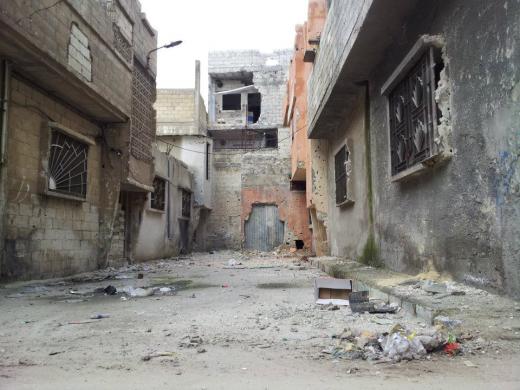
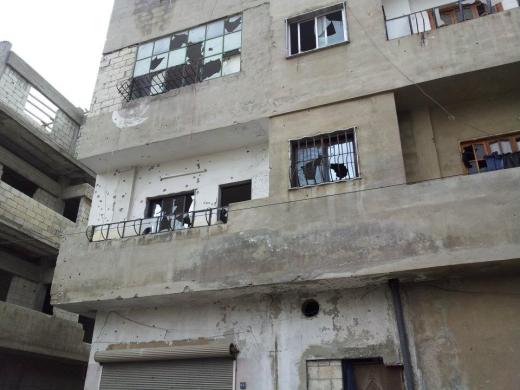 The power grid and maintenance services have collapsed. Residents create burn piles and bonfires to stay warm. Trash accumulation will lead to unsanitary conditions and disease.Food is scarce. Residents complain that there are no fruits and vegetables to be had. Those with the ability to do so provide direct commodities like bread, eggs, gas, meat and even cigarettes for sale or trade.:
The power grid and maintenance services have collapsed. Residents create burn piles and bonfires to stay warm. Trash accumulation will lead to unsanitary conditions and disease.Food is scarce. Residents complain that there are no fruits and vegetables to be had. Those with the ability to do so provide direct commodities like bread, eggs, gas, meat and even cigarettes for sale or trade.: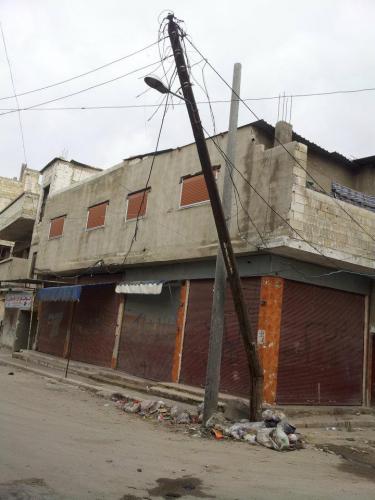
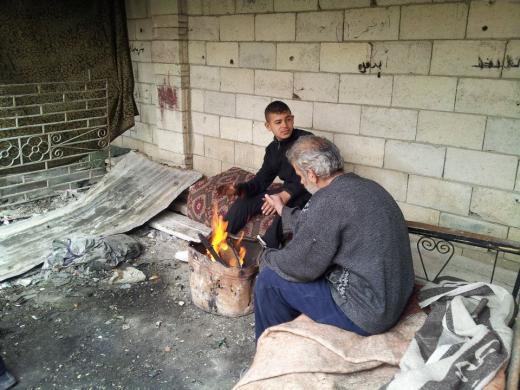
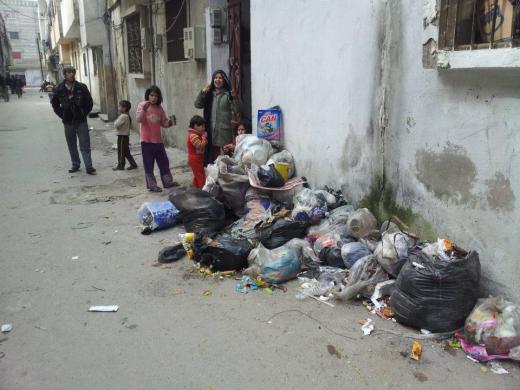
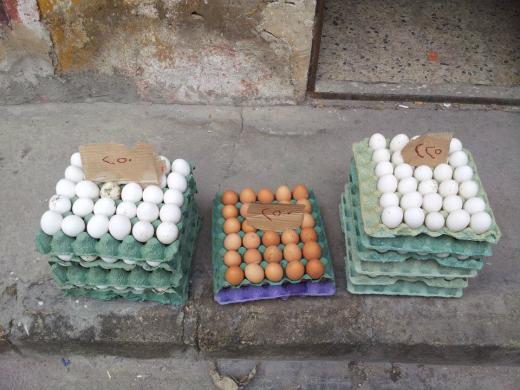
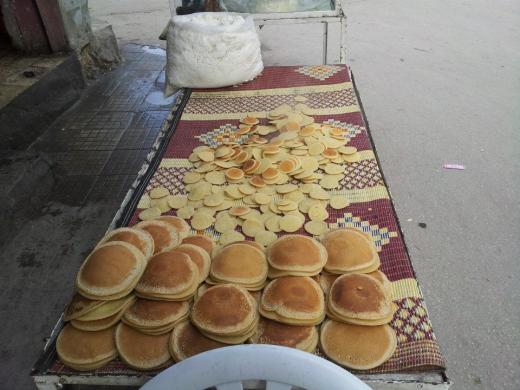
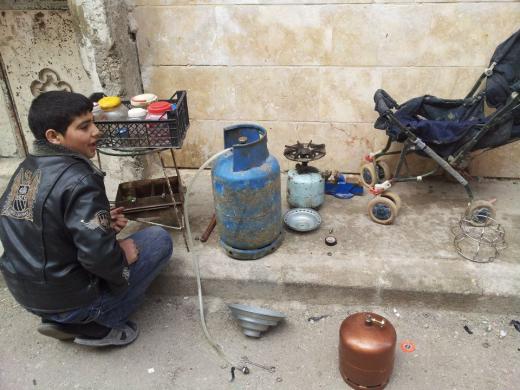
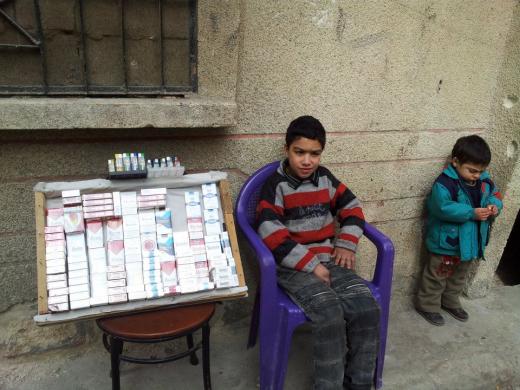
Photographer Mulham Al-Jundi before being shot in the leg by a sniper. He tweets “A sniper is right behind me!” :
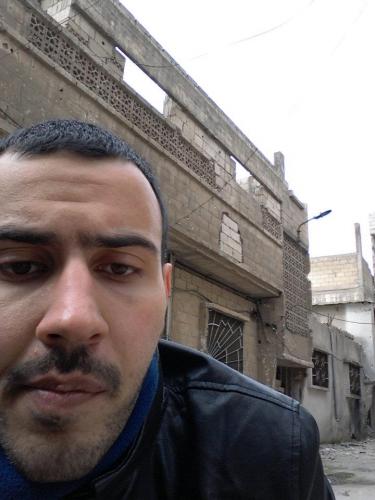
The other perspective. Syrian snipers take aim at ‘rebels’ : http://www.youtube.com/watch?feature...&v=AKp_d2tTIkU <---- Video Link
(Video hat tip The Prepper Website and Selco)
Video Report: Syria: the horror of Homs, a city at war Syria: the horror of Homs, a city at war - YouTube <---- Video Link
If The United States were to undergo a paradigm shift like that which have seen in Syria, Libya, Iraq, Afghanistan, the Balkans, or any number of countries and regions in the last hundred years, including World Wars I and II which changed the face of the entire world and claimed the lives of over 100 million people, everything will change and the entire system in which we live, including our conceptualization of the laws by which society and civilization are supposed to function, will be turned on its head.
No matter how much we prepare for the expected and unexpected, when the laws of society and humanity break down no one is really ready for what the singularity of collapse will bring.
Selco Recounts: Being In a City Under Siege:While difficult for many to accept, societal breakdowns are a common occurrence on our planet. They happen more often than governments of industrialized nations and the mainstream media like to admit. Often, entire populations of cities, regions and countries are thrown into impossible and unimaginable circumstances.
Some dark memories hide deep inside of me. Not easy to get to them. But this is one that came back.
My friend got caught with his comrade in one house, actually two of them are left something like behind enemy lines, in basement of destroyed house. Enemy group, some 150-200 men was doing sweeps through that street, robbing, and killing civilians who had no time to run. He said to me that they spend two days in basement, covered with all kinds of junk, watching outside through a small opening, few meters from opening was a corpse of girl, maybe 10 years old.
In order to see if somebody is coming to their basement, one of them needed to be constantly on that small opening, watching. He said he managed to watch atrocities that those people did to civilians and somehow push that deep inside his brain, over the time, to put these memories away. But to stare at dead kid, all the time, with her eyes wide open, blond hair, he almost lost his mind.
One of them had a pistol and few bullets, other one had a rifle , 30 bullets and homemade grenade (made from unexploded tank grenade).
They make agrement, if they see enemy is coming to the basement, they gonna fire everything and blow themselfs with that grenade. Nobody came in basement, burned house was not interesting for other guys. After two days enemy group just pulled back.
The world as we know it today, with all of its current political, economic, financial and social instability may very well be on the brink of a wide-spread, historic collapse of unprecedented proportions.
Worst case scenarios have happened before. For many, they are happening tonight.
Let history be our guide. Let current events be our warnings signs. One day the worst case scenario may not be just a hypothetical event.
Special thanks to Todd at the Prepper Website and Selco at SHTF School.
Living With Snipers: The Reality of Collapse *Photos; Video*Last edited by AirborneSapper7; 03-02-2012 at 10:56 AM.
Join our efforts to Secure America's Borders and End Illegal Immigration by Joining ALIPAC's E-Mail Alerts network (CLICK HERE)
-
03-02-2012, 11:02 AM #1744Senior Member


- Join Date
- May 2007
- Location
- South West Florida (Behind friendly lines but still in Occupied Territory)
- Posts
- 117,088
Society’s Five Stages of Economic Collapse
David Meyer
February 28th, 2012
Target of Opportunity
Comments (330)
Society as we know it will break down and collapse in a five stage process outlined here. While it can be accelerated by certain events like war, a natural disaster, pandemic, terrorist attack, or even an impending asteroid impact, history has shown that economic collapse will essentially happen in this five stage process. To survive the collapse, it is important to read and interpret the signs and understand what assets are important to the current situation so you can be prepared for the worst thereby allowing you to survive intact and with as little damage as possible.
STAGE 1. The Decay Begins
Everything is good and the economy is thriving. A high standard of living has been achieved. This is the way things should be. Goods are cheap and readily available. Everything seems to be in abundance. Stores are filled with retail items ready to be purchased. Life in general is good. The nation’s working infrastructure is solidly intact and working well. However, the idea that everyone is entitled to have what others have earned now permeates society. Redistribution of Wealth Policies are implemented and quietly woven into the fabric of society. Unchecked and under the guise of fairness and equality, these policies slowly decrease productivity and increase dependency on government entitlement and welfare programs.
Primary Assets:- Career
- Home Value
- Savings
- Investments – Stocks and bonds
- Health Insurance
- Lifestyle Image
- Good Credit Rating for Debt Accumulation
STAGE 2. The Slippery Slope
The economy goes into a slow but steadily increasing decline. Unemployment is on the rise. Ever increasing numbers of people receive government assistance in one form or another. People are paid not to work. Government spending has increased dramatically. The price of gold, silver, and other precious metals rise to prices unheard of just a few years earlier. Inflation reaches the double digit levels.
Primary Assets:- Cash
- Precious Metals, Gold and Silver coins
- Job Stability
- Elimination of debt
- Health Insurance
- Home Equity
- Automobile with good MPG
- Acquiring secluded land more than 40 miles from densely populated areas
STAGE 3. It is Going to Get Worse
The total collapse of the economy begins after a significant and prolonged decline. The government implements price controls. Shortages on essential goods become widespread. Foreclosed houses sit vacant and deteriorating by the tens of thousands. Middle class neighborhoods begin to look like slums. The government begins to print currency to pay its bills and support the tens of millions on public assistance. Inflation increases even more and unemployment exceeds 25%. Banks and businesses fail at ever increasing rates. Nobody seems to have any money. Many are now homeless. Labor unions instigate strikes, civil unrest, and large scale riots. Government services are interrupted and unreliable. Local and national infrastructure is in decay. Violent gangs begin to appear and assert themselves. The government begins confiscation of firearms from law abiding citizens. Violence is everywhere. Cities and urban areas become very dangerous places to live.
At this stage, the country seems pretty much beyond the point of no return. However, things can still be reversed even at this stage if the right person at the top really believes in the basic fundamental concepts of Freedom, Independence, Liberty, and Individual Rights and is not afraid to do what is necessary to reverse the current trend. He will be vilified and hated because of his attitude toward personal responsibility, cutting entitlements, and ending welfare programs. Of course, if the right person were in power and did what needed to be done, none of this would have happened in the first place.
Primary Assets:
- Gold and Silver coins
- Cash
- Job
- Automobile
- Home
- Short term food supplies
- Short term fuel stores
- Firearms and ammo
- Plans to relocate to a secluded rural hideaway
- Small livestock – chicken, rabbit, fish…
- A close network of like minded people
- Survival knowledge and skills
STAGE 4. The Grab for Power
The collapse can transition to this stage at any time after Stage 3. Most of the middle class have lost everything. What used to be well manicured middle class neighborhoods are filled with the carcasses of empty houses damaged and destroyed by vandals. The nation’s infrastructure has been seriously neglected and is in need of a major overhaul. The power grid becomes unreliable. Rolling blackouts are a daily occurrence. You can no longer buy or sell gold or own foreign currency. Inflation is out of control. Now the economy collapses. There is a rush for everything and the shelves go empty in a matter of hours. Society falls into chaos. The control of urban areas shifts when violent gangs takeover control of the streets and urban neighborhoods. The government issues restrictive measures in an attempt to control the economy. Everything is in short supply and heavily rationed. Food and gasoline is very expensive and there are very long lines to get them when they are available. Affordable quality health care is non-existent and your job is a distant memory. You will do without what you are unable to provide for yourself. You will discover what it is to live in a third world country.
Primary Assets:- Relocation to the rural hideaway
- Firearms and ammo
- Long term food supplies (1 year minimum)
- Adequate fuel stores
- Security plan to protect the group and assets
- Trained dog for security
- A working knowledge of survival gardening
- Survival knowledge and skills
Stage 5 is next… and it is not pretty.
STAGE 5. Freedom, Liberty, and Independence is Lost
The government implements martial law. Fighting between civilians and government forces break out nationwide. Maintaining more than a 30 day supply of food is considered hoarding food and is illegal. Severe poverty and starvation become a common sight. The government offers marginally acceptable food, water and shelter in exchange for your Freedom, Liberty, and Independence. Democracy ends and a Socialist form of government takes over under the guise of fixing society’s problems with the false promise that peace and prosperity will return better than it was just a few years ago. A Totalitarian regime assumes power and the individual freedoms and liberties once enjoyed by the people are completely eliminated.
Primary Assets:- Rural Hideaway
- Security plan to protect the group and assets
- Living below the radar in a community of like minded people
- Firearms and the ability to use them
- Guard dog for security
- Survival knowledge and skills
- A working and producing garden capable of feeding 150% of the group
- A stable supply of clean water
- Vegetable seeds for long term food production and barter
- The will to live and survive in a harsh political climate

FAILURE TO PREPARE TODAY WILL INCREASE THE MAGNITUDE OF YOUR SUFFERING TOMORROW.
It is better to prepare 10 years too early than 10 minutes too late. Many who lack vision will say that it will never happen and for those who decide to live unprepared should consider the following statement.
LACK OF PLANNING ON YOUR PART DOES NOT CONSTITUTE AN EMERGENCY ON MY PART.
This article has been contributed by David Meyer. You can read more of his editorials at the Target of Opportunity web site.
Society's Five Stages of Economic CollapseLast edited by AirborneSapper7; 03-02-2012 at 11:04 AM.
Join our efforts to Secure America's Borders and End Illegal Immigration by Joining ALIPAC's E-Mail Alerts network (CLICK HERE)
-
03-02-2012, 12:11 PM #1745Senior Member


- Join Date
- May 2007
- Location
- South West Florida (Behind friendly lines but still in Occupied Territory)
- Posts
- 117,088
The Puzzled Homemaker: What's On The Menu For A Bioterrorist Attack?
February 13, 2012 by Peggy Layton
 Homemakers can use supplements to help their families survive in times of stress.
Homemakers can use supplements to help their families survive in times of stress.
In 2012, we plan for the worst and hope for the best. The threats are real and include bioterrorism and nuclear war. When all “heck” breaks loose, homemakers can use supplements to help their families survive.
The Missing Ingredient
For food to be truly nutritious, it must provide the minerals and other nutrients that our bodies need, especially in times of stress. When we are under stress for long periods of time, the body releases hormones to help deal with the stress. These hormones increase blood pressure and cause muscles to tense up.
In times of stress our body’s cholesterol and triglyceride levels increase along with our blood pressure. Our calcium/magnesium level is depleted when we are under stress. If we had to take off and walk several miles in a bug out situation, we could sweat out a great deal of our minerals. Illness such as severe diarrhea and vomiting can deplete us of our minerals. Diabetics have to be especially careful when the “tummy bug” hits because the flu can mess up the blood sugar and make them extremely ill.
Taking time to get healthy now is just as important as being in good health in the face of severe challenges.
When our nutritional needs increase in times of stress there are three things we can do:
- Eat healthier foods and store the best quality foods and supplements that will support our body’s needs in times of stress.
- Detox.
- Mineralize.
Enzymes
Man does not live by carbohydrates, fat and proteins alone. Man (and woman) must have enzymes as well as minerals.
Enzymes are catalysts to break down the foods we eat, and enzyme activity is down in times of stress. Enzymes naturally occur in fruits and vegetables that are alive. If you don’t have access to live foods in a stressful situation, you will need to stock up on enzymes in the form of supplements from the health food store.
Minerals
What else does the body need? Minerals. Chances are you are depleted in much-needed minerals right now. Your body obtains minerals from the food that you eat. Does your current diet provide enough minerals?
Between 1900 and 1940, minerals in the soil were depleted by almost 85 percent. In 1936, the government issued Senate Document 264 and during the second session of the 74th Congress, lawmakers ordered this report to be printed by the U.S. Government Printing Office. It is interesting to read and applies to our plight in the 21st Century:
Do you know that most of us today are suffering from certain dangerous diet deficiencies which cannot be remedied until the depleted soils from which our foods come are brought into proper mineral balance?Almost 70 years ago, the food that was being grown was not providing enough sustenance. The food itself was devoid of minerals. Why aren’t we doing any better now? The suggested solution to this problem is to put minerals back into the soil. Another solution is to put the minerals back into our bodies.
The alarming fact is that foods—fruits and vegetables and grains—now being raised on millions of acres of land that no longer contains enough of certain needed minerals, are starving us—no matter how much of them we eat!
If you are not growing your own food, you have no control over what goes into the soil where your food was grown. Composting and building up the soil with organic minerals will help keep your backyard garden from becoming depleted. You can control this yourself if you are a gardener.
Are the synthetic minerals that are put into the soil the same as naturally occurring ones coming from organic composting? It was documented that 99 percent of Americans were deficient in minerals in the early 1900s. Has anything really changed? Oh, yes. We drink more soda and eat fast food. Our stress levels are elevated and our hearts are failing us.
Both the Journal of Bone and Mineral Research (Sept. 2003) and the American Journal of Clinical Nutrition (October 2006) revealed a correlation between carbonated drink consumption and decreased minerals in the bones.[1]
Stress, disease, poor diet and soda consumption all increase our need for minerals.
Adding these missing minerals back into our daily diet in a naturally occurring form can be one of the most important dietary changes that we can make today to give us reserves in times of stress.
How Can We Increase Mineral Consumption?
- Research the origin and content of your current food supply. (Is this possible? With so many foods coming from different sources could we ever know their mineral profile? )
- Take a reputable mineral supplement. It is up to you to decide what mineral supplements are the best for you. Personally, I would stock up on vitamins and mineral supplements for times of stress. Find them in health food stores. It is best if you can eat organic foods that you know have been raised properly; however, that is very hard to do, especially in the winter when crops must be imported from Mexico and other countries.
- We could eat dirt.
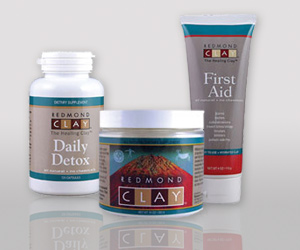 Eat Redmond Clay Daily Detox
Eat Redmond Clay Daily Detox
Last year, I featured Redmond Trading Company’s Redmond Clay as a way to detox the intestinal tract and remove harmful toxins. In times of bacterial and viral outbreaks, a strong immune system and an ability to absorb nutrients are needed.
Redmond Clay Daily Detox also provides the minerals needed but missing in the standard American diet. In addition to being an essential component of a food-storage program for the future, it is a powerful adjuvant to restoring health now. Taking two capsules of the highest-quality mineral resource every day will clean out toxins that weigh you down.
 Redmond Trading Company also has a product that eliminates leg cramps that is sold under the Re-Lyte brand. Athletes use it to help their performance. Mothers give it to their children when they have growing pains that cause them to cry because their legs cramp up. Re-Lyte is made from the mineral-rich Sea Salt from the Redmond Salt Mine.
Redmond Trading Company also has a product that eliminates leg cramps that is sold under the Re-Lyte brand. Athletes use it to help their performance. Mothers give it to their children when they have growing pains that cause them to cry because their legs cramp up. Re-Lyte is made from the mineral-rich Sea Salt from the Redmond Salt Mine.
Purchase these Redmond products at www.peggylayton.com.
Redmond Clay
The gifts of the Earth are for you to use. Redmond Clay is harvested from the site of an ancient sea right in the middle of Utah. The Sundance Sea has been buried for millions of years; the Redmond salt comes from a Jurassic source 200 feet below the Earth’s surface. The salt and clay mine are protected from the pollutants that absorb into regular salt extracted from the sea. With Redmond clay and salt, what is left from its concentrated mineral deposits for you is worth its weight in gold. Native Americans knew of its value. They carried “mud balls” made of clay with them and ingested small amounts of the mud with water to cleanse toxins and promote internal healing.
My Testimony
I have my own testimony of the power of Redmond Clay to heal. Just last week, I got up in the middle of the night to get some calcium magnesium supplements to help me sleep. I came into my dark bedroom and crashed into my grandson’s baby bed. I jammed my middle toe into the bone in my foot. It was definitely broken. I tried to sleep but couldn’t because the pain would not subside. I hobbled to the bathroom and reached for my bottle of premixed Redmond Clay called First Aid. Applying it liberally around my toe and then wrapping it with gauze and tape to splint it, I hobbled back to bed. The pain subsided, and I was able to get to sleep. Redmond Clay reduced the inflammation dramatically, had an analgesic effect to reduce the pain and has eliminated the bruising.
Burn Relief
Another testimonial of Redmond clay is that my daughter-in-law burned herself on the forearm with a curling iron. It was a large burn and very blistered. I doctored her with Redmond clay that is already premixed called First Aid. I put a bandage on it and, within seconds, the pain was gone. It healed in a couple of days. If anyone gets a burn of any kind in our family, I always use Redmond Clay. The high mineral content helps heal much faster than anything else I have tried, and the pain leaves instantly.
Intestinal Problems
One tablespoon of Redmond Clay can be mixed in a glass of water and let set for an hour. It will settle to the bottom of the glass, then you drink the water full of minerals. For the diehards that can handle it, they drink the clay and water. It has been proven to help with all kinds of intestinal problems as well as colon issues like colitis, diverticulitis and many other intestinal tract problems. People who eat clay report better health and get rid of problems that plagued them for years. I sell a book on my website called The Healing Power Of Clay.
Keep Clay In The Medical Kit
This is a must-have for any home emergency kit. I have a 6-pound gallon bucket of Redmond Clay in my storage. I would not be without it. Redmond clay comes in powdered form, which you just add water and mix yourself. It also comes in a premixed squeeze bottle called First-Aid. It comes in capsules, called Daily Detox. Daily Detox is good for the intestinal track, absorbing 30 times its weight in poisons and toxins as it moves through the body.
One of the best ways to support an overtaxed immune system is to eliminate the toxins that are taxing it. You can detox and strengthen your immune system with minerals provided from the gifts of the Earth. To enjoy the gifts of the Earth and to store for future needs, check out Redmond Salt and Clay Products at www.peggylayton.com.
–Peggy Layton
The Puzzled Homemaker: What's On The Menu For A Bioterrorist Attack? : Personal Liberty AlertsJoin our efforts to Secure America's Borders and End Illegal Immigration by Joining ALIPAC's E-Mail Alerts network (CLICK HERE)
-
03-02-2012, 12:16 PM #1746Senior Member


- Join Date
- May 2007
- Location
- South West Florida (Behind friendly lines but still in Occupied Territory)
- Posts
- 117,088
Massive Solar Storm Could Kill Grid By 2020
March 2, 2012 by Sam Rolley

The number of American preppers appears to have grown in recent years. With shows such as “Doomsday Preppers” on major television networks, the prepper lifestyle has become a bit more mainstream. If one space physicist is correct, now may be a better time than ever.
According to research published by Pete Riley, senior scientist at Predictive Science in San Diego, Calif., in Space Weather, there is about a one in eight chance that the Earth will be hit by a massive solar megastorm this decade. The event would likely fry electrical components and cause trillions of dollars in damage.
Solar flares are caused because the sun goes through an 11-year cycle of increased and decreased activity. During solar maximum, sunspots and enormous magnetic whirlwinds erupt from its surface. Sometimes, the flares burst outward from the sun, spewing a mass of charged particles out into space.
The biggest solar event ever to affect Earth, the Carrington Event, occurred in 1859. Astronomer Richard Carrington watched an enormous solar flare erupt from the sun’s surface, emitting a particle stream at the Earth traveling more than 4 million miles per hour. When the energy reached the Earth’s atmosphere, the particles generated the intense ghostly ribbons of light known as auroras.
A 2008 report conducted by the National Research Council concluded that in today’s electronic world a similar event could spark: “disruption of the transportation, communication, banking, and finance systems, and government services; the breakdown of the distribution of potable water owing to pump failure; and the loss of perishable foods and medications because of lack of refrigeration.”
Massive Solar Storm Could Kill Grid By 2020 : Personal Liberty Alerts=
Join our efforts to Secure America's Borders and End Illegal Immigration by Joining ALIPAC's E-Mail Alerts network (CLICK HERE)
-
03-04-2012, 01:30 AM #1747Senior Member


- Join Date
- May 2007
- Location
- South West Florida (Behind friendly lines but still in Occupied Territory)
- Posts
- 117,088
The Five Principles of Preparedness
Phil Burns
March 3rd, 2012
American Preppers Network
Comments (83)
The following article has been generously contributed by Phil Burns of the American Preppers Network. Phil and his family were recently featured on the Animal Planet show Meet the Preppers and you can follow him at Phil801 on Facebook.
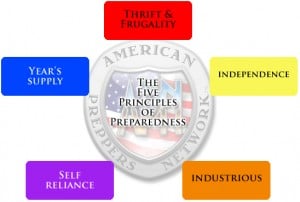 There are basic principles that keep us and our families grounded that are key to our happiness as a family unit while we Walk the Path of the Prepper. There is safety and peace that comes from having car insurance, home insurance, medical insurance,etc. What many families frequently ignore is “Standard of Living Insurance”. At its heart, this is whatPreparedness, Self-Reliance, Prepping – however you want to call it – is. By Getting Started in Prepping, or continuing in Prepping as the case may be, and following these five Principles of Preparedness we can provide our families with the assurance that we will be able to maintain a certain standard of living. This standard of living is dictated by the level of preparedness we are able to achieve and maintain.
There are basic principles that keep us and our families grounded that are key to our happiness as a family unit while we Walk the Path of the Prepper. There is safety and peace that comes from having car insurance, home insurance, medical insurance,etc. What many families frequently ignore is “Standard of Living Insurance”. At its heart, this is whatPreparedness, Self-Reliance, Prepping – however you want to call it – is. By Getting Started in Prepping, or continuing in Prepping as the case may be, and following these five Principles of Preparedness we can provide our families with the assurance that we will be able to maintain a certain standard of living. This standard of living is dictated by the level of preparedness we are able to achieve and maintain.
For example, if a family falls into crisis and they have no preparations then once the average two weeks of supplies they have on hand has been used up, they will drop to a poverty standard of living. If that same family had a month’s worth of supplies stored up, they would have a buffer of a little more than a month before they suffered consequences of their situation. Likewise, if they had a year’s supply of essentials stored, they would effectively be giving themselves a year to be able to recover and plan in the event of a paradigm changing event.
Standard of Living Insurance, or Prepping, provides us with a hedge against calamity. There is much talk recently of “Doomsday” events – which are inappropriately and improperly titled. After all, Doomsday literally means the last day before the end of the earth. What point is there in preparing for that? Massive, widespread crisis, such as; an EMP, Nuclear War, Coronal Mass Ejection, Economic Collapse, and so on is a frequent topic as well. While these things are important to consider in preparing, it is a mistake to hyper-focus on them. There are many other immediate, closer and more likely scenarios that make sense to focus on such as the loss or major injury of a breadwinner, loss of a primary job, extended sickness, accidents and other personal calamities. These happen every single day and each of us likely knows someone to whom this has happened. These are the things that are most essential to develop a “Standard of Living Insurance” against.
The most common effect of living an abundant life, as many of us do, is complacency. As we progress and develop disposable income the complacent tendency is to adjust our standard of living upwards by purchasing a bigger house, a new vehicle, a boat or other recreational toys instead of investing that money to insure the standard of living that we previously grew accustomed to. It is most prudent to instead, in times of largess, not expand your standard of living right away but to choose to ensure that if the current boon withdraws the family is not affected by it. Complacency however, leads us down the path of seeing increased income to the home as play, expendable, or rewarding money – all of which it can be with the proper perspective. That perspective is to view this blessing as an opportunity to ‘play’ at increasing our stores as much as possible, to purchase as many ‘expendable’ goods as possible – that can go into storage, or to ‘reward’ ourselves by adding a more expensive item to our storage that will significantly increase the amount of coverage our Standard of Living Insurance provides us. It also gives us the opportunity to scrutinize our funds and storage to determine if the family can splurge a little and enjoy some recreational time without it impacting the bottom line of our Standard of Living – but adamantly without changing our cost of living.
Following the Principles of Preparedness allows heads of households to reduce stress, find peace and be comfortable in an ever-changing and tumultuous world.
Practice thrift and frugality
Principle 1
The depression era saying of “Use it up, Wear it out, Make it do, or Do without” sums up the practice of Thrift. Living thriftily is not a popular concept in our “Staying up with the Jones’s” mentality, but the folly of that mentality is that if one thing goes wrong and your family slips into crisis, you will have to learn all about “Staying above water”. Living thriftily is a very simple, effective and immediate method to increase your spending power. Imagine being, instead of a consumer; a creator, a repairer, or simply abstaining. It is phenomenally financially wasteful to eat at restaurants on a regular basis, in addition to being typically un-healthy; it also takes away from time spent together as a family creating a personal dining experience at home, together. Thrift is a practice of not wastinganything including time and money.
Frugality dictates that we live within our means and “Waste not, want not”. It requires us to be prudent with how we spend our money and to cautiously and guardedly decide how to distribute it. Why do Americans work themselves so hard and as soon as the paycheck comes in, they throw it to the wind as quickly as they can – leaving them with no reserves, no safety and no peace? It is because we have come to accept abundance as our standard. We foolishly assure ourselves that there will be a check next pay period – which there normally is, until there is not. It is the high possibility that at some point something critical will happen in our lives that brings us to the conclusion that it is very likely that at some point, that check will not be there.
One massive waste that Americans have become very comfortable with is living on credit. We have become extremely complacent with our finances in this regard. Instead of doing without for a short time while we save, we finance everything and as a consequence, pay financing fees and interest that we somehow justify as necessary. It is not necessary that we ever pay financing fees or interest for anything, even a house, if we are willing to be prudent. Instant gratification is the bane of thrift and frugality. We Americans have deceived ourselves into believing that we ‘deserve’ to live a better lifestyle than our parents (which took them a lifetime to achieve) – when in reality – we DESERVE to be secure and at peace in our lifestyle. It is ironic that as a society, we will dicker over $3,000 on a new vehicle and then finance it for 5 years – wherein we condemn ourselves to paying several times that in financing fees and interest.
What good have we done ourselves by shaving $3,000 of off $30,000 when we just finance it? If you’re willing to pay astronomical fees for the pleasure of immediate gratification, amortizing $3,000 does NOTHING to our monthly bill. A frugal person would take 3 years and save monthly as much as they would have paid out on their car payment with a little bonus savings here and there over time. In that short period of time they would accumulate enough cash that they could go into the car dealership and lay down a pile of $23,000 in cash and say they want to walk out with either their money or that $30,000 car. They’re going to walk out with the car because the dealer wants the instant gratification of the cash versus selling an amortized note at a discount.
Living a thrifty and frugal lifestyle is truly simple. Use it up. Wear it out. Make it do. Do without. Waste not. These things lead us to not being left wanting when a crisis strikes our family. These two highly empowering tools not only give us the ability to build up our Standard of Living Insurance, they also bring an assured peace and allow us to live a truly abundant lifestyle where we are in control of our money instead being a slave to lenders.
A Prepper who successfully follows this principle for a few years will find themselves in a position where they are able to spend time not working without it affecting the family in an adverse manner.
Seek to be Independent
Principle Two
Debt can be crippling and crushing to a family, making them unable to move forward due to the demands of making payments on things they potentially don’t even own anymore. Seek to become Independent from debt! Learn to abhor the idea of being forced to labor and earn money that is not yours as a consequence of choosing to “live a little better” by going into debt. Living independently means being free to choose what is pertinent for you and your family to do with your money.
As you avoid going into debt and gain greater control of your money, establish savings that will grow and serve you as you become the master of your money. Learn to budget and responsibly manage your money as it is a very powerful tool to either enslave or empower you. You can begin to build wealth while you’re getting out of debt by putting together a wise plan like the ones Dave Ramsey teaches in his Financial Peace University.
Independence doesn’t just mean money though. Seek to be Independent of the influences of the world such as; caffeine, alcohol, drugs, tobacco, un-healthy yet addictive food, medications (where possible) and so on. All of these things not only make you a personal slave to addictions, it also indentures your wallet to spending wasteful amounts of money to satiate your personal weaknesses. Strive to become Independent of all these things and you will not only find a healthier you, you will also increase your income as you free a daily outgo to servicing your demons.
Live Independent of the entrapping influences of society as much as possible. Free your mind of thinking you need a better looking car, a prettier house or better clothes. Do what works for YOU, not what you think others will think highly of. Live independent of the fear of judgment of others and become secure in your own person. There seems to be a farcical belief in our society that we should appear as wealthy as possible. The idiocy of this belief is that it fails to take into account just how damaging it is to our self-esteem, our lives and our livelihood. Break free of these childish societal ‘norms’ and live a life independent of the influence of advertisers, marketers and peer pressure!
Prepper families who learn to live independently will find themselves prospering greatly – in ways that may not be apparent to the enslaved masses of society.
Become Industrious
Principle Three
Learn, Explore, Do. Manage your circumstance to your advantage, be enterprising and fully explore opportunities that come your way. Seek always to discover ways to create benefit to you and your family. When opportunity presents itself, work hard at redefining and reshaping yourself, your position and your knowledge to be worthy of the success that opportunity can provide. Be resourceful, always looking for a new way to create what you need in order to succeed.
Common ways to be industrious include furthering your education – your whole life – and constantly working to develop new skills. By exploring opportunities, we are able to assess their potential, weigh risk and make a decision as to whether our conclusions merit committing to an opportunity or walking away from it. By improving ourselves constantly, we open up even more opportunity that can potentially bring success.
Idly standing by and waiting for success to land in your lap is a poor strategy. Being industrious means getting up and attempting something – even if it has the potential to fail. The Farmer who fails to put in a crop because he doesn’t think there was enough snowfall during the winter loses out when spring rains finally bring plenty of water. When you commit to something, work hard at it; throw in everything you’ve got. Getting up and going is truly the only way to end up somewhere else.
Preppers who industriously seek out opportunity will soon find the one that will create a change in the direction their lives have been heading.
Strive Towards Self-Reliance
Principle Four
The Principle of Self-Reliance is predicated by and builds upon the first three principles. They are unavoidably intertwined and interdependent. Self-Reliance is, in its simplest form, being able to create or provide all needed things as the result of labor using a developed skill or talent and being able to provide resources as a result of a judicious practice of storing needful things. Therefore, becoming Self-Reliant is the actual process of developing skills and talents while putting away resources.
When combined with Thrift and Frugality, Self-Reliance is providing needed things for yourself that you would otherwise have had to pay money for such as; growing a garden, sewing or repairing clothes, building furniture, building a home, fixing your vehicle and so on. It is being willing to enjoy the fruits of your labor versus the blandness of buying something commercially produced. It is accepting things for their functionality, not for the logo that was stamped on them in a plant somewhere. It is being willing to use something that may be less than perfect in its manufacture but is pure in intent and purpose, knowing that the next one you create you will be able to work out flaws and produce something better.
Self-Reliance, when combined with Independence, drives us to be truly reliant on ourselves in all areas. It teaches us to discover a vocation where we are able to create an expandable income using our talents and labor instead of falling into a career where our income is constricted by salaries and our progress in hindered by being boxed into a job description. A truly independent person creates income opportunities for themselves and others while staying free and clear of debt and interest. A Self-Reliant person builds their own storage and is not dependent on a grocery store to be stocked and operational for them to feed themselves and their family.
Your Industriousness should be more than simply financially motivated. Self-Reliance is the act of being free of needing others, including companies, the government, or your community to provide for or support you. It is learning how to; make soap, grow your own food, provide your own energy, defend yourself, create the things you need and so on. It requires research, learning, experimenting, failing, experimenting more and finally succeeding – in gaining a new skill, accomplishing something new or developing a new vocation. An industrious and Self-Reliant person is truly a creator and experiences the joy of creation on a daily basis.
A Prepper who begins to become Self-Reliant experiences a mental shift and begins to see things such as a grocery store as a warehouse that is utilized to stock up their own storage.
Aspire to have a year’s supply of every needful thing
Principle Five
The natural outgrowth of becoming truly Self-Reliant is to feel compelled to store things up that are essential for our family’s ensured safety, comfort and existence. Every needful thing teaches us to consider the possibility of storing up a supply of every item that we purchase which we truly need. What is a need? Simply put, it is something that it would be difficult or impacting to have to live without. This includes; food, clothing, water, heat, power, home medical supplies, fire starters, light and so on.
It is obviously not prudent to just purchase a year’s supply of every needful thing. Instead, it is a goal that is pursued relentlessly by the Self Reliant Person and is adjusted for each item of consideration. For example, it is quite inexpensive and easy to acquire a year’s supply of ketchup – at most a family will probably use 2 bottles a month.
Therefore, purchasing 24 bottles would give you a year’s supply. However, a year supply of something like water, which is consumed every day, requires a very different approach. It is not feasible to store a year supply of water unless you have your own water tower. There are other options available though which include such things as; drilling a well, installing a rain catchment system, being situated near a body of water. Several of these options would require filtering the water that you acquire. For the money spent on a filtering system, such as a Berkey filter, it becomes prudent to purchase filtering capability for the system that will last several years. Each item is adjusted in quantity and time by its own consideration.
One year is not a magic number. It is, however, a measure which provides us with a lengthy buffer to recover from whatever has happened. It also allows us to be charitable towards others who have fallen on hard times without it creating a severe impact on us. Imagine an unprepared neighbor or friend having their bread winner incapacitated for a period of time and not being able to provide for themselves. You are not impacted by their crisis and because you have a year’s supply stored up, you have the opportunity to assist them by opening your storage to them and allowing them to take what they need without it causing you an economic impact and with very little added risk to yourself.
Begin by striving to build up a 3 month supply, then double it and double it again. Once you’ve accomplished the first three months, you will have an idea of the amount of time and money it will take to acquire a year’s supply.
The Prepper who is striving to build a year’s supply of every needful thing will experience a dramatic reduction in stress and inverse increase in peace as they begin meeting goals on the path to achieving this principle.
The impact of living The Principles of Preparedness
When teaching these Principles, the question is inevitably asked “What if nothing ever happens that I need my supplies for?” To which I respond, “That would be wonderful!” Most people don’t get it right away, but let’s consider it.
Consider if you adjusted your life and lived for years under these principles. What impact would there be if nothing happened that required you to survive off your stores? Might it be possible that in following these principles you will have created a new life for yourself that is infinitely better than it would be otherwise? Would you possibly have spent that time living in peace, without stress and with a much higher level of confidence, satisfaction and self -esteem? I can testify to you that this is indeed what will happen! In fact, the mere application of these principles in your life will allow you to weather small crises without them even registering a bump in the continuity of your life. When you are living a Self-Reliance lifestyle with a full year’s supply, not having an income for a month is inconsequential. If you fully commit to living these principles, do you see how this would be the outcome? Would that serve you to be able to live that way?
Consider also that as you develop a year supply of every needful thing, you are to live off of that supply. You don’t just package things up and leave them in a corner to gather dust. You consume your supply each month and at the end of four weeks, go to the “warehouse” (aka grocery store, etc.) and replenish your supply with six weeks worth of what was consumed. This allows you to continuously grow your storage with little to no visible impact to you. And, if times are tough financially, you can extend to 8 or 12 weeks without it stressing your family.
As you become these Principles, you will experience breaking free of the slavery of debt, a ‘career’, of “keeping up with the Jones’s” and most importantly, the stress of trying to live month to month. What you will find instead is that you are able to fully experience life and truly enjoy the blessings of your family.
All the while knowing that the secret to a happy life is wrapped up in a little concept called being a “Prepper”!
- Inspired by a talk by James E. Faust
The Five Principles of PreparednessLast edited by AirborneSapper7; 03-04-2012 at 01:33 AM.
Join our efforts to Secure America's Borders and End Illegal Immigration by Joining ALIPAC's E-Mail Alerts network (CLICK HERE)
-
03-04-2012, 01:37 AM #1748Senior Member


- Join Date
- May 2007
- Location
- South West Florida (Behind friendly lines but still in Occupied Territory)
- Posts
- 117,088
Recommendations From the Three Mile Island Recovery Team: How to Survive Nuclear Holocaust
Mac Slavo
March 2nd, 2012
SHTFplan.com
Comments (99)

When the three mile island nuclear accident happened in March of 1979 Joy Thompson (www.wiselivingjournal.com) was one of the members of the health physics team responsible for initial recovery operations. The accident, which plant owner Metropolitan Edison downplayed by claiming that “everything is under control,” later led to wide-spread evacuations, first with a 5-mile radius evacuation zone being established, and then later a 20-mile evacuation zone. As was the case with the recent Fukushima disaster, those who would be most affected by the spread of dangerous radiation were the last to be told of the seriousness of the disaster. In the case of Three Mile Island, it was well over 24 hours before residents were told to get out. In Fukushima it was days.
Ms. Thompson contacted us recently to advise us that she and the surviving members of her team have created an easy to follow info-graphic and checklist that can help you to survive a nuclear disaster should you ever be faced with the same emergency as those people living around Three Mile Island.
While often ignored by most Americans, even on the heels of the ongoing Fukushima nuclear meltdown, the potential for nuclear disasters today is clearly more of a threat than ever before. Despite assurances from reactor manufacturers and plant operators, we’ve seen numerous disasters over the course of the last three decades, and we can be fairly certain that we will have another one in the future.
If you live anywhere on the east or west coasts, chances are you are close to an existing reactor.
According to the infographic below, one in three Americans live within 50 miles of a nuclear reactor, and by all accounts, as demonstrated by Fukushima, in the event of disaster this could very well be the ’kill radius.’
Thus, we urge all of our readers to explore the below graphic, as well as the ‘weapons’ and checklist that follow.
Additionally, if you are ever in an area that has experienced any type of nuclear emergency (be it a reactor meltdown, dirty bomb attack, etc.) we strongly recommend that you evacuate first and ask questions later, because as we saw with Three Mile Island, “everything” is not always under control.
Don’t wait for the experts on TV to tell you it’s time to go. Just grab your bug out bags, GOOD manuals and go!
How To Survive A Nuclear Holocaust
Last year, nuclear meltdowns and multiple explosions at the Fukushima Daiichi reactor complex sent plumes of radioactive contaminants across the northern Japanese countryside. These contaminants were projected in the atmosphere putting the northern hemisphere in danger of hazardous isotopes.
The events at Fukushima brought into focus the very real danger of a nuclear holocaust. At Best Health Degrees we decided to put together this infographic detailing some practical steps you can take to survive the danger posed by harmful nuclear radiation.
The Key: to surviving a nuclear holocaust is minimizing exposure to internal and external radiation. You will need some “weapons” to help in this effort.
The Weapons
- Duct Tape
- Mop
- Water filtered vacuum
- Sponge
- Paper towels
- Plastic bags
- Sutrdy trash container
- Hand-held radiation detector
Survival Checklist
- Think of nuclear radiation as an invisible layer of dust on all surfaces that needs to be carefully cleaned away and managed
- Create an air tight seal in your home (duct tape comes in handy)
- Aggressively clean off surfaces in your home without creating dust (wet wipes and water filtered vacuums)
- Keep food in clean, sealed containers
- Clean floor and furniture with water filtered vacuum
- When you go outside, wear a set of coveralls or a duster over your clothes.
- Shower every time you come indoors from having spent more than a few minutes outdoors.
- Use good quality dust masks to cover your mouth and nose, especially when going outdoors
- Launder sheets, handkerchief masks, outdoor clothing, at least once a day
- Keep all windows closed even if it’s nice outside) and sealed with duct tape
- Seal all doors that open to the outside with duct tape.
- Carry young children while outdoors or going to and from a vehicle.
- Keep pets indoors as much as possible for the duration.
- Sleep at least two feet above the floor
- Keep pots, pans, plates, silverware and utensils in clean cabinets
- Rinse your cooking utensils, plates, silverware, glassware
- Rinse the outside of all food cans before opening
- Do not do anything that can stir up dust (don’t use duster or a normal vacuum)
Special thanks to Joy Thompson.
Hat tip Ryan
Also see:
Survive Anything: Nuclear Attack
The Number One Catastrophic Event That Americans Worry About
US Nuclear Emergency Response Plan: “Get On The Phone Really Quickly and Figure it Out”
The Effects of Nuclear Weapons, Primary U.S. Targets, and Nuke Detonation Mapping
From The Ready Store: IOSAT – Radiation Protection Tablets
Recommendations From the Three Mile Island Recovery Team: How to Survive Nuclear HolocaustLast edited by AirborneSapper7; 03-04-2012 at 01:40 AM.
Join our efforts to Secure America's Borders and End Illegal Immigration by Joining ALIPAC's E-Mail Alerts network (CLICK HERE)
-
03-04-2012, 04:43 AM #1749Senior Member


- Join Date
- May 2007
- Location
- South West Florida (Behind friendly lines but still in Occupied Territory)
- Posts
- 117,088

Fig. 1. Particles spacing on 20 March, 2011 at 12:00 UTC (top) and on 27 March, 2011 at 18:00 UTC (bottom); shades of red indicate particles in the bottom layer, up to 3 km; black to dark blue indicate the middle layer, up to 6 km height; and light blue indicates the upper layer; the trajectories were simulated using the Lagrangian dispersion model (time of the particles release was on 12 March 2011). (For interpretation of the references to colour in this figure legend, the reader is referred to the web version of this article.)
Study: All of Western US and most of East Coast, Midwest, Canada covered with airborne particles at various altitudes on March 20, Fukushima plume model shows — Based solely on Reactor No. 1 explosion (PHOTO)
More at the story Link Study: All of Western US and most of East Coast, Midwest, Canada covered with airborne particles at various altitudes on March 20, Fukushima plume model shows — Based solely on Reactor No. 1 explosion (PHOTO)
More at the pdf file http://www.happysmile.se/dokument/sc...um_litauen.pdfJoin our efforts to Secure America's Borders and End Illegal Immigration by Joining ALIPAC's E-Mail Alerts network (CLICK HERE)
-
03-04-2012, 05:03 AM #1750Senior Member


- Join Date
- May 2007
- Location
- South West Florida (Behind friendly lines but still in Occupied Territory)
- Posts
- 117,088
Paul A Drockton M.A.
Inflation and Economic Collapse


Dollar Adjusted return: Lost $165,000
http://moneyteachers.org/Inflation.html
Last edited by AirborneSapper7; 03-04-2012 at 05:09 AM.
Join our efforts to Secure America's Borders and End Illegal Immigration by Joining ALIPAC's E-Mail Alerts network (CLICK HERE)


 226Likes
226Likes LinkBack URL
LinkBack URL About LinkBacks
About LinkBacks




 Reply With Quote
Reply With Quote



Overton @ Newsmax host | Just said what no one in MSM will admit...
10-28-2025, 11:30 PM in General Discussion